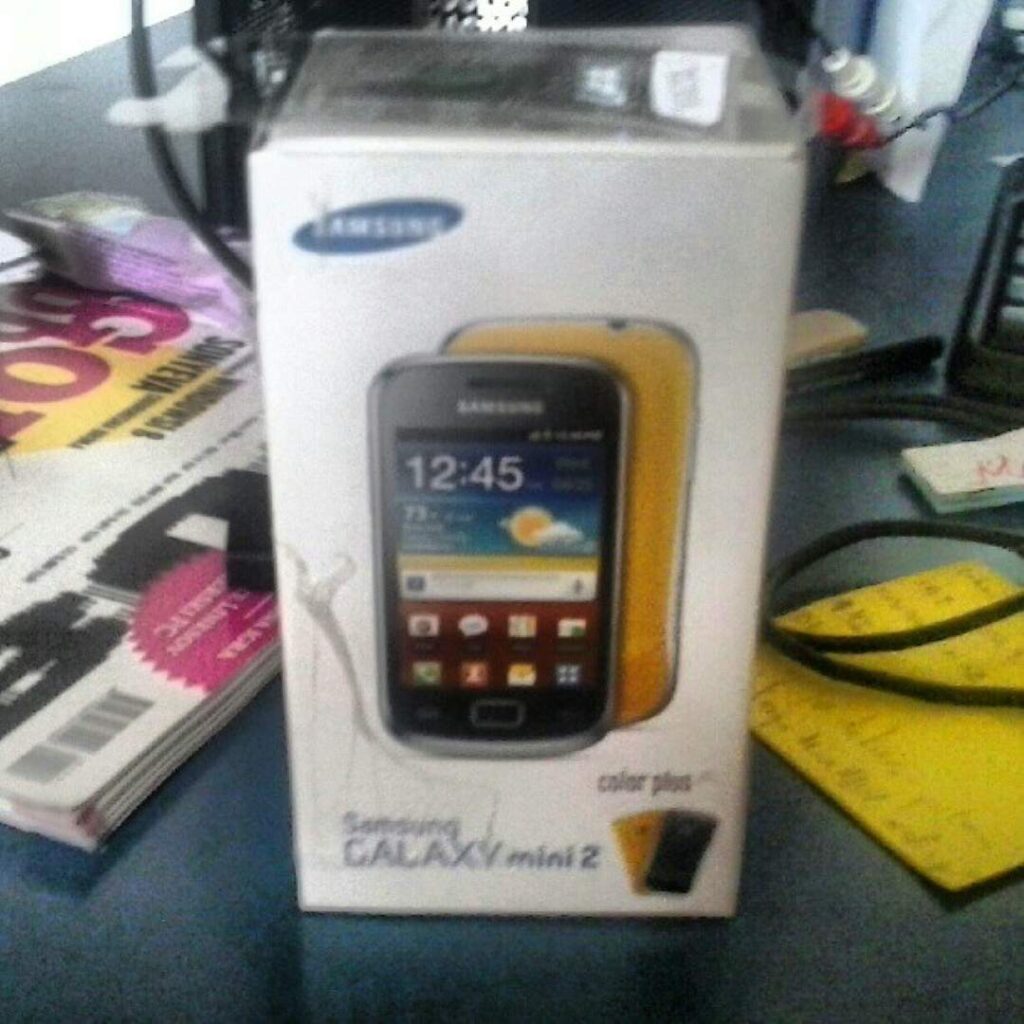Author’s Note (2025):
This post is a retro review of the Samsung Galaxy Mini 2, originally published on my old WordPress.com/Blogger blog on October 4, 2012. Back then, this budget-friendly smartphone was one of Samsung’s notable offerings in the Galaxy series. This series is also updated with retro throwback to two years of using device after all, so you can check it here. The text has been translated from Croatian to English using machine learning while preserving its original tone and observations.
Samsung Galaxy Mini 2 – Review
The Samsung Galaxy Mini 2 is one of the smartphones from Samsung’s Galaxy series. This model stands out because it was one of the better options in its price range (up to 1200 HRK). Before diving into the review, I’d like to highlight its specifications, as sourced from GSM Arena.
There are a few extra details worth mentioning that aren’t listed on GSM Arena. First, this phone does not have NFC technology (the S6500 model does). Second, there aren’t many custom ROMs available for it on the XDA Developers forum—there are only two (at time of writing this review), and they’re modified stock ROMs. We’re still waiting for CM7 or CM10. Lastly, the phone can be overclocked to a maximum of 1.2 GHz with the right kernel.
The phone comes packaged with a charger, USB cable, instructions, and an additional interchangeable back cover (mine was yellow). Unfortunately, headphones are not included, but since the phone has a standard 3.5mm headphone jack, this isn’t a major issue.
Given that this is a budget phone priced at up to 1200 HRK, you might expect it to feel cheap or poorly made. However, that’s not the case at all—the phone is well-built and fits comfortably in your hand. The button placement is standard and borrowed from higher-end Samsung models like the Galaxy S II.
The 3.2-inch screen displays colors beautifully indoors, but outdoor visibility is significantly worse. You’ll need to set the brightness to 100% just to see what you’re doing in bright sunlight.
The device features a 3 MP camera that performs well in good lighting conditions but struggles when taking photos in darker environments due to the lack of a flash. I’ll overlook this since this is a low-budget device.
The operating system is Android Gingerbread (specifically version 2.3.6). The experience is slightly marred by T-Mobile branding during startup and shutdown animations. The interface is enhanced with Samsung’s TouchWiz 4 launcher and widgets. Samsung has announced that by the end of this year, they will release Android Jelly Bean (version 4.1.1) for this device with the new TouchWiz 5 interface.
Considering its hardware and specifications, the device performs very fluidly and quickly—there’s no noticeable lag in apps or within the interface itself.
Overall, I’d rate this phone a solid 9/10. The only reason it doesn’t get a perfect score is due to the lack of a flash for the camera.
Note from 2025: shorthands for CM meant for CyanogenMod Custom ROM which was popular back then.
Acknowledgment:
This post was reviewed, proofread, and refined with the assistance of Perplexity AI Pro from Revolut Ultra Subscription and the o3-mini Reasoning model within Perplexity AI Pro. Their support helped bring this retro throwback to life while preserving its original spirit and style while translating it into English.
Cover image was recovered from personal old Instagram archives (from old archival media’s like DVD’s, archival offsite HDD’s and NAS) and upscaled to 1080p using Microsoft PowerToys Image Resizer Tool.
